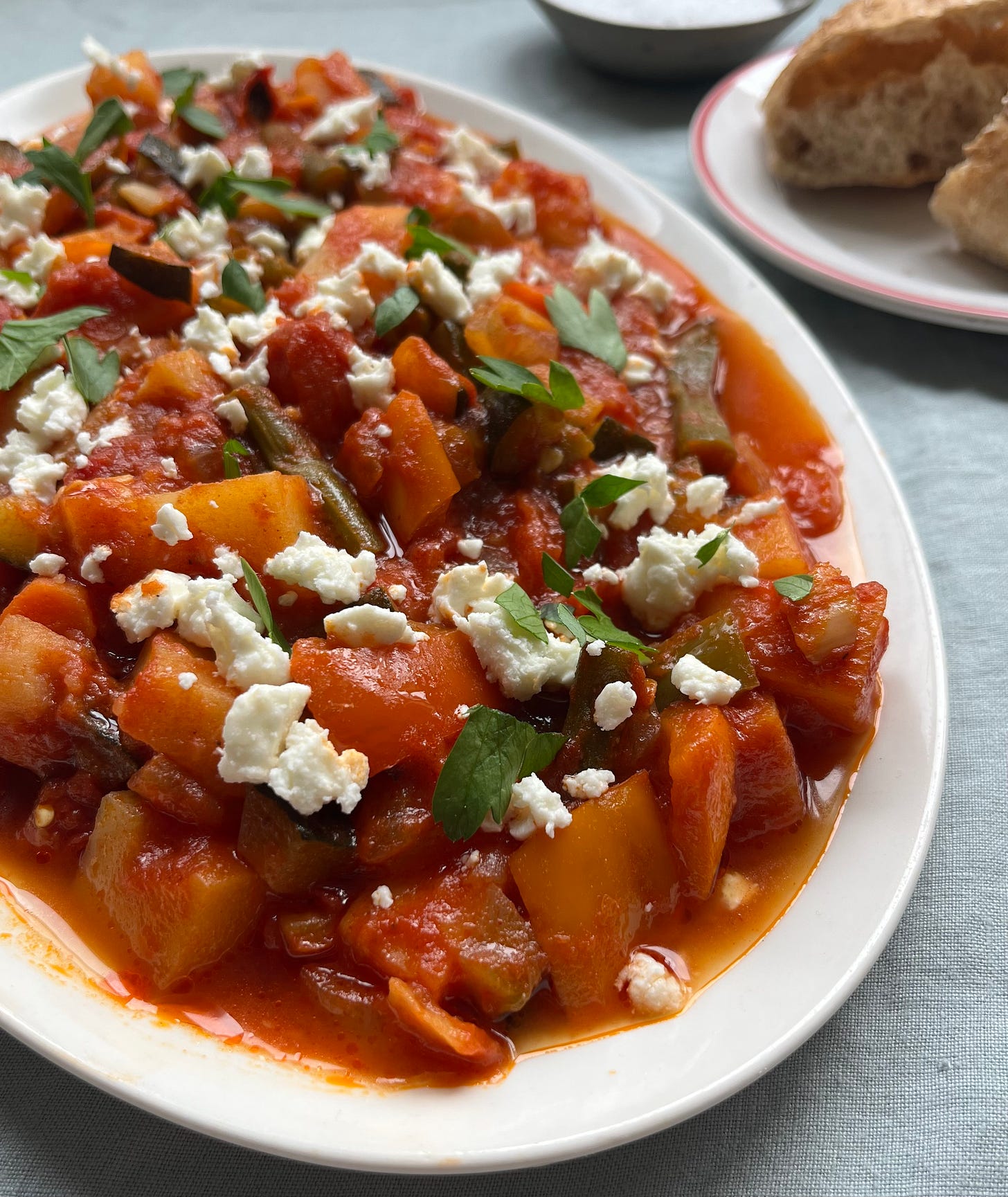Romanian Summer Stew (Guvetch)
Bought too many veggies at the farmer's market? Make this!
You know that thing where you go to the farmer’s market planning to buy ONE OR TWO things (say, heirloom tomatoes and a pint of blueberries), and you end up carting home two giant tote bags filled with produce?
Or that other thing? Where you innocently start a garden in spring, and by midsummer that little patch of green has spiraled into a monster of productivity, leaving you with no recourse but to drop anonymous bags of zucchini and basil on your neighbors’ porches?
Yeah…it’s a problem. A good problem as far as they go, but still.
Fortunately, from ratatouille in France and Moroccan matbucha, to Mexico’s kaleidoscope of fresh and cooked salsas, every warm-climate cuisine seems to have a method for putting summer’s overabundance of produce to good use.
I am particularly partial to guvetch, a Romanian dish that distills summertime into a saucy stew, while putting a significant dent in your vegetable haul. The dish originally hails from Turkey and is named after the widemouth ceramic pot (called a güveç) it is traditionally cooked in. How could you not fall in love with a dish named after its cooking vessel? The Turks introduced the stew to the Balkans during the period of Ottoman rule (variations of guvetch are also eaten in Bulgaria), and it quickly caught on.
According to Gil Marks’ The Encyclopedia of Jewish Food, guvetch is served year-round, but not always the same way. “Stews containing summer vegetables - eggplants, green beans, okra, peppers, tomatoes, and zucchini - are called guvetch yaz (literally ‘summer stew’),” he writes. “Those predominantly made with winter squash and root vegetables - carrots, celeriac, potatoes, and turnips - are called guvetch kis.”
Some versions of guvetch include meat, but kosher-keeping Romanian Jews traditionally kept it vegetarian, presumably so it could be served with mamaliga, the polenta-like cornmeal porridge that is often cooked with milk or butter. Romanian Jews who immigrated to Israel brought guvetch with them and today it is commonly sold jarred at grocery stores. (But it is so much better homemade, of course.)
Guvetch is simple to make (about 15 minutes of peeling and chopping, followed by an hour in the oven), and endlessly customizable. You can add chunks of eggplant - in fact, many recipes do, I just happen prefer it without. You can toss in mushrooms, sub a different kind of potato, use yellow squash instead of zucchini, or swap the canned tomatoes for fresh plum tomatoes. (Note: If you go the fresh tomato route, they should be peeled first. Personally, I’d rather use good quality canned tomatoes in my stew and save the fresh ones for snacking, tomato toast, and salads!)
However you make it, you end up with a light, but richly-flavored stew that tastes exactly like what it is: a jumble of summer’s best flavors all in one pot. Here’s my take on guvetch. Let me know if you make it, and any other way you are using up your summer produce bounty!
Romanian Summer Stew (Guvetch)
Make a dent in your garden’s bounty (or the haul you brought home from the farmer’s market) with this simple, flavorful, peak summer stew. Here’s the recipe, loosely inspired by the one in The Jewish Cookbook, plus my favorite ways to serve it.
Serves 6
Keep reading with a 7-day free trial
Subscribe to The Jewish Table to keep reading this post and get 7 days of free access to the full post archives.





